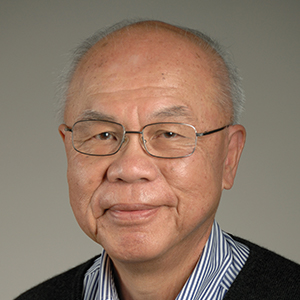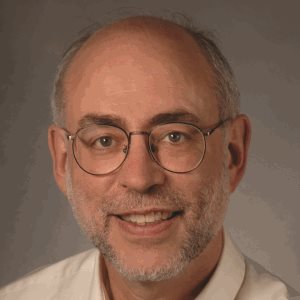Thressa C. Stadtman (1920 – 2016)
Thressa “Terry” C. Stadtman died peacefully at her home on December 11 at age 96. She is remembered as a pioneer in anaerobic electron transport, vitamin B12 metabolism and selenium biochemistry.
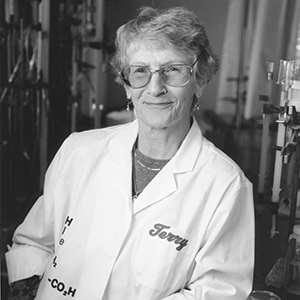 Thressa C. StadtmanPHOTO COURTESY OF BUHM SOON PARK
Thressa C. StadtmanPHOTO COURTESY OF BUHM SOON PARK
Stadtman and her husband, Earl, created a superb mentoring environment at the National Institutes of Health in which many outstanding scientists were trained. The Stadtmans’ rigor in scientific inquiry and their superbly successful mentoring is affectionately known as “the Stadtman Way” (see https://history.nih.gov/exhibits/stadtman). Their Journal Club, initially feared by newly arrived trainees and then enthusiastically embraced, was the furnace where scientific rigor was forged. No detail or question was too trivial to be brushed aside. The Stadtman Way also included generous sharing of credit in publications with more junior scientists. Camaraderie, lively and friendly discussions, and lab parties led to lifelong friendships among those lucky enough to be shown the Stadtman Way.
Terry was born in 1920 in Sterling, New York, and studied bacteriology at Cornell University, where she received her B.S. in 1940 and her M.S. in 1942. She earned her Ph.D. from the University of California, Berkeley, under the guidance of Horace Barker, who discovered the active form of B12. For her thesis work, she investigated the mechanism of methane fermentation by the activities of two anaerobic microorganisms, Clostridium sticklandii and Methanococcus vannielii, which she isolated from the mud that she scooped up from the San Francisco Bay. While working in Barker’s lab, she met his technician and graduate student Earl Stadtman. They were married in 1943.
After graduation in 1949, Terry and Earl moved to Boston, where she did postdoctoral training with Christian Anfinsen at Harvard Medical School while Earl worked with Fritz Lipmann at the Massachusetts General Hospital. When Anfinsen was offered a position as the chief of the Laboratory of Cellular Physiology and Metabolism at the NIH in the newly formed National Heart Institute, he invited Terry to move with him to continue her work on bacterial cholesterol oxidase. At that time, the NIH was one of the few institutions that would hire a married couple as independent investigators. Earl was able to tag along as the accompanying spouse because Anfinsen also offered him a position. They moved to the NIH in 1950. Terry retired from the NIH in 2009, 59 years after her arrival.
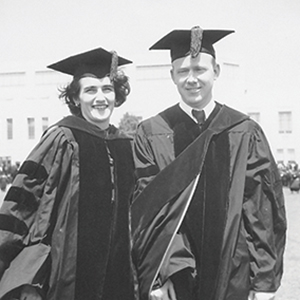 Stadtman with her husband, Earl, at their Ph.D. graduationPHOTO PROVIDED BY P. BOON CHOCK & RODNEY LEVINE
Stadtman with her husband, Earl, at their Ph.D. graduationPHOTO PROVIDED BY P. BOON CHOCK & RODNEY LEVINE
The Nobel laureate Michael Brown at the University of Texas Southwestern Medical Center, who did a postdoctoral stint at NIH, says, “What I remember most about Terry was her enthusiasm for science … Terry was outgoing and always eager to discuss data, whether they were her own or that of others. Her interest in biology was as pure as that of anyone I ever knew. Terry loved scientific beauty without any concern for its utility. She was a scientist’s scientist.”
Terry’s initial scientific goal at the NIH was to elucidate principles of biochemistry by studying the metabolism of anaerobic bacteria, organisms that seem capable of almost any imaginable chemical reaction. While chemists had to use harsh solvents and high temperatures to make many reactions happen, these microbes easily achieved the same reactions with extraordinarily high yields at ambient temperatures in aqueous solutions! Using extracts from M. vannielii and C. sticklandii, Terry studied the mechanisms of amino acid fermentation and methane production from carbon dioxide. Her investigations gave insights into anaerobic electron transport and vitamin B12 metabolism. In the course of these studies, Terry and her colleagues discovered four of the vitamin B12-dependent enzyme systems. She also established that the free form of B12 can function as a methyl-group carrier and that its deoxyadenosyl coenzyme forms serve as hydrogen carriers. Her findings provided the basis of our understanding of methane biosynthesis.
Terry’s pioneering work on selenium biochemistry began with her 1972 discovery that protein A, a low-molecular-weight subunit of the Clostridial glycine reductase, is a selenium-containing protein. In 1976, Terry and her colleagues became the first to demonstrate that the selenium was present as selenocysteine. They showed that selenocysteine plays an essential role in the catalytic activity of many selenoenzymes. Terry went on to establish that selenium is an essential constituent of several other enzymes. In addition to its incorporation as a selenocysteine residue, the selenium can be coordinated with molybdenum in a molybdopterin cofactor. She extended her findings to eukaryotes with her demonstration that a thioredoxin reductase in human lung adenocarcinoma contained selenocysteine. Her studies then established that the codon for selenocysteine in thioredoxin reductase was UGA, which was normally the terminator codon. By collaborating with August Böck of Munich, Dolph Hatfield of the National Cancer Institute and others, she soon was established that selenocysteine is inserted co-translationally rather than as a post-translational modification. Hence, selenocysteine came to be known as the 21st amino acid, sharing its codon with the termination process.
In 1984, Terry and colleagues showed that the selenium-containing nucleoside in several bacterial seleno-tRNAs was 5-[(methylamino)methyl]-2-selenouridine. Collaborating with Robert Balaban at the NIH, she established that seleno-phosphate is the immediate selenium donor for the biosynthesis of selenium-containing biomacromolecules, selenocysteine in proteins and 5-methylaminomethyl-2-selenouridine in seleno-tRNAs. A series of publications from 1996 until her retirement elucidated the mechanism by which selenophosphate synthetase catalyzes the synthesis of selenophosphate. It’s not surprising that Terry became known as the “mother of selenium biochemistry.”
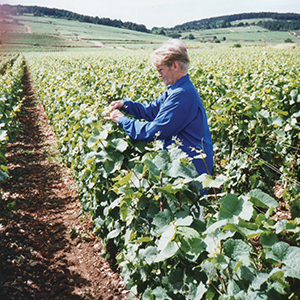 Stadtman tried her hand at viticulture.PHOTO PROVIDED BY RODNEY LEVINE
Stadtman tried her hand at viticulture.PHOTO PROVIDED BY RODNEY LEVINE
Terry was elected to the National Academy of Sciences in 1981 and the American Academy of Arts and Sciences in 1982. Among her awards, Terry received the William C. Rose Award of the ASBMB in 1986, the Klaus Schwarz Medal from the International Association of Bioinorganic Scientists in 1988, and the inaugural L’Oreal Lifetime Achievement Award for Women in Science from L’Oreal–UNESCO in 2000. The organism Methanospaera stadtmaniae is named in her honor. The American Society for Biochemistry and Molecular Biology gives out the Earl and Thressa Stadtman Distinguished Scientist Award every other year to an established scientist for his or her outstanding achievement in basic research. The award alternates with the Earl and Thressa Stadtman Young Scholar Award, which goes to a scientist with 10 years or less of experience as an independent investigator. The awards were established by friends and colleagues of the Stadtmans to preserve their legacies as scientists and mentors.
Terry, with the whole-hearted support of Earl, championed and supported women in science. Terry was able to attend Cornell only because of scholarship support and working as a waitress for four hours a day. This is why Terry generously endowed the Stadtman Scholarship Fund for undergraduates and the Stadtman Fellowship Fund for graduate students at Cornell. The funds provide support for women who are majoring in the sciences. Being optimistic about the future for women in science, she specified that when women no longer face roadblocks to careers in science, Cornell may redirect the Stadtman funds to support other groups who still face impediments in becoming scientists.
Earl and Terry lived in a home on six acres adjacent to Rock Creek Park in Washington, D.C., one of the places President Abraham Lincoln sometimes took carriage rides to try to unwind a little during the Civil War. After Earl’s death in 2008, Terry deeded their property to expand the park. In accepting the gift, the park commissioners gave that section of the park the legal name the Stadtman Preserve. It features a mature forest, steep slopes, floodplain, wetlands, a stream, and nearly a thousand azaleas and rhododendrons planted by Earl.
Terry also tried her hand at applied biochemistry. In the early 1990s, she purchased a first-growth vineyard in the Burgundy region of France known by the name “Les Chouacheux.” She, Earl and a microbiologist friend from Berkeley, Terry Leighton, then launched a classic Stadtman experiment aimed at answering the question, “If we make a pinot noir wine with Burgundy grapes but with Napa Valley yeast and fermentation techniques, will it taste like a French Burgundy or a California Pinot Noir?” Their answer to the question turned out to be, “We’re not sure, but it’s a really good wine!”
Enjoy reading ASBMB Today?
Become a member to receive the print edition monthly and the digital edition weekly.
Learn moreGet the latest from ASBMB Today
Enter your email address, and we’ll send you a weekly email with recent articles, interviews and more.
Latest in People
People highlights or most popular articles
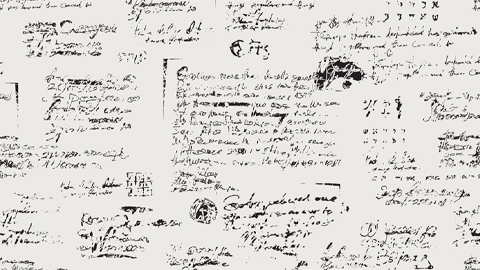
Notebook scribbles to synthesis pathways
The discipline Kendrick Smith learned as a musician helps him stay focused at the bench.
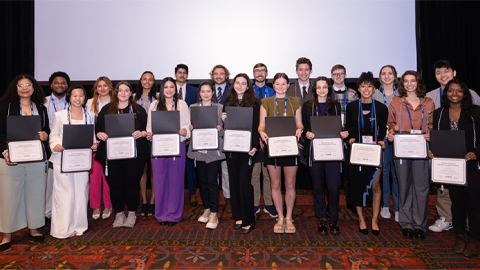
ASBMB inducts new honor society members
Chi Omega Lambda, which recognizes exceptional juniors and seniors pursuing degrees in the molecular life sciences, has 31 inductees in 2024.

2024 voter guide
Learn about the candidates running for ASBMB Council, Nominating Committee, Publications Committee and treasurer.

Charles O. Rock (1949 – 2023)
Colleagues and trainees remember a world expert in membrane lipid homeostasis.

Honors for Clemons, Hatzios and Wiemer
Awards, honors, milestones and more. Find out what's happening in the lives of ASBMB members.

Touching the future from the bench
Scholar, scientist, teacher and mentor Odutayo Odunuga discusses the important roles of the institutional PI, his journey and his research.

